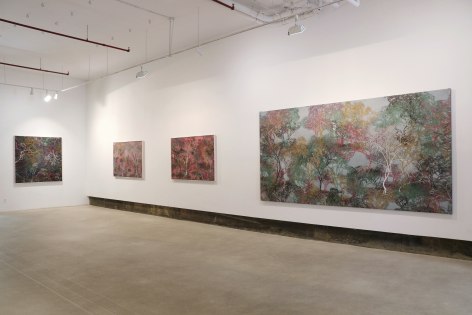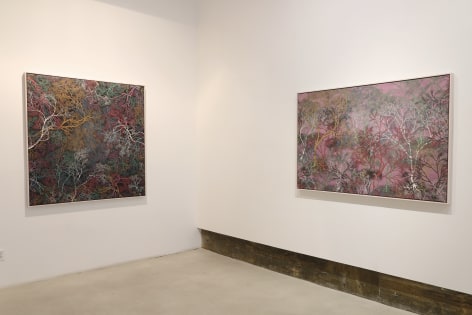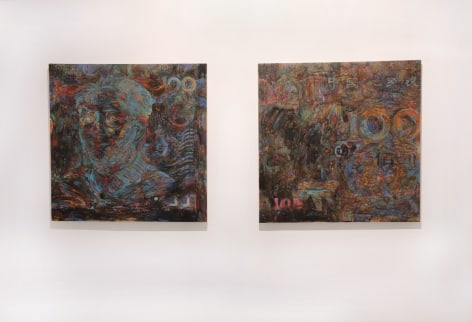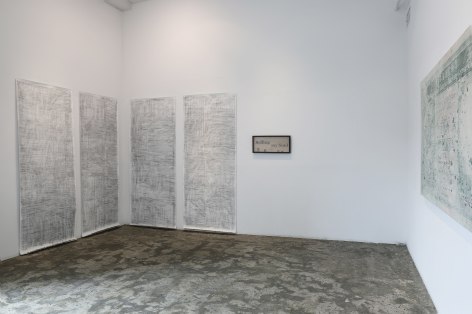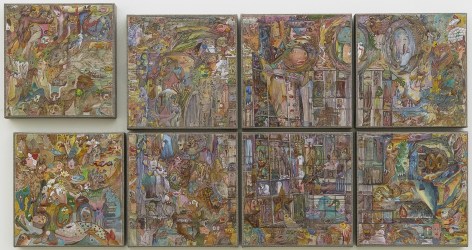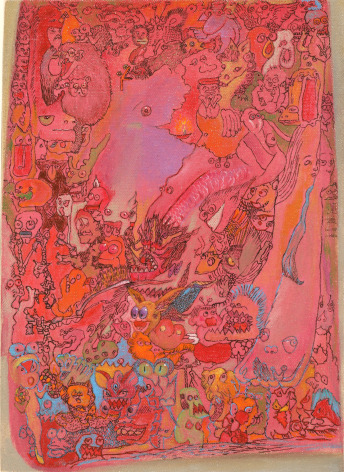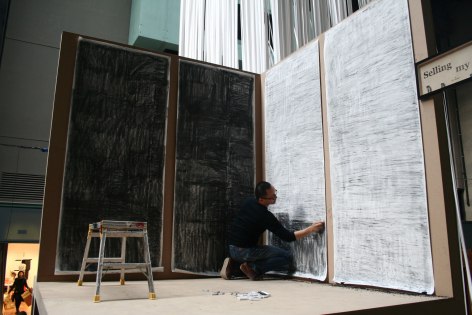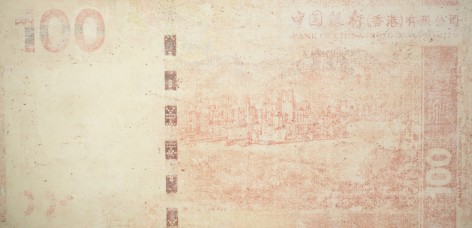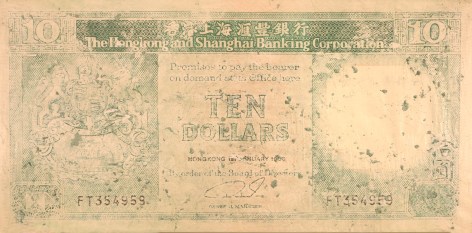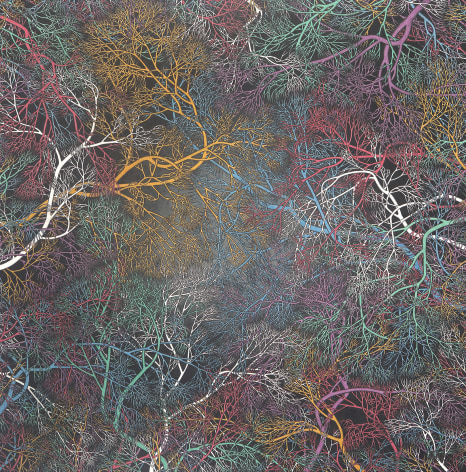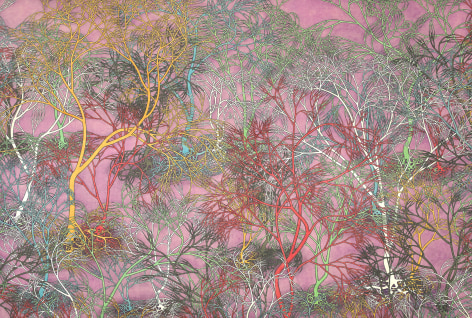Chambers Fine Art is pleased to present Transitions, an exhibition featuring three young artists whose works illustrate the way in which transitional periods within their lives have informed their art practice. The gallery will present the work of Dong Yuan, Lam Tung-pang and Lao Tongli, with each artist submitting works that correspond with significant changes in their personal and professional lives.
For Dong Yuan, the accelerated pace of change in contemporary China causes her to retreat from time to into periods of self-reflection. The last year for example has marked an artistic departure from her previous oil paintings of household objects, and she has instead been creating works that are spiritually connected with the automatic paintings of the surrealists, painting ‘whatever comes into my mind, in a subconscious manner’. The resulting compositions are devoid of space and filled with a sea of overlapping shapes and colors. Upon closer inspection, it is in fact creatures and characters of all kinds that populate her canvases, some in human form, others resembling animals or monsters, and all of them with cartoonish sets of eyes staring every which way. Although her paintings are small in scale, their abundance of detail sets up an immersive experience. In one of her less ‘subconscious’ compositions, Dong Yuan’s creatures coalesce into an image of Chairman Mao on the 100 renminbi note. The painting is meant as a critique on an ‘ugly by-product’ of China’s fast-paced modernization, the writhing mass of creatures representing the greed-obsessed, ‘awful side of human nature’.
Lam Tung-pang employs similar currency-related imagery in his recent works. Two Hong Kong currency notes, printed onto Xuan paper and then mounted on canvas, have been methodically ‘erased’, leaving the faded images of a 10 HK dollar note from the British colonial era and a contemporary 100 HK dollar note issued by the Bank of China. In a 2012 article in the Yishu Journal of Contemporary Chinese Art, Lam mused that ‘Administratively, much of Hong Kong has returned to the way it was mandated by China, but its culture and lifestyle won’t return for at least fifty years... We are exactly in the moment of the shift... After one hundred years, there may no longer be a Hong Kong dollar bill, and our identity will not be found anywhere. Perhaps that’s why so many possibilities could happen at this moment.’
The two recent works are related to one of his best known pieces, Selling My Soul, which is also presented as part of this exhibition. Selling My Soul was first presented at the Tate Modern in the 2010 exhibition No Soul For Sale, which brought together various independent art organizations around the globe to participate in a large-scale group exhibition. In an piece presented by the Hong Kong-based Para:Site art space, Lam printed avatars of himself on small erasers, which he then used in an attempt to erase four large charcoal drawings. It was presented as a time-based performance piece that for Lam represented the all-consuming act of creating or ‘doing’ art, illustrated by the erasers that were consumed one by one. Turning the title of the exhibition on its head, Lam argued that the artist’s soul was in fact constantly being put up for sale, no matter the venue, going so far as to ‘question whether the independent art space is as independent as it always claims to be’.
Lao Tongli’s series of ink paintings began as a way to cope with his father’s long battle with heart disease, to which he succumbed after several surgeries and numerous hospital stays. Constantly conversing with doctors, and poring over charts and illustrations of human arteries and veins, Tongli began to incorporate the imagery of blood vessels into his artwork, where they evolved into a dense, layered labyrinth of interweaving colored lines. Painting with a traditional Chinese brush, his webs of overlapping lines become evocative of landscapes, natural root systems, or coral formations that seem to extend infinitely. Extremely labor-intensive, the artist views his work as an exercise in patience, and actively tries to ‘enjoy the physical labor’ involved with his creation process. Mindful of the spiritual connotations in his meditative approach to painting, Lao Tongli tries to ‘find freedom and nirvana’ through his work.

